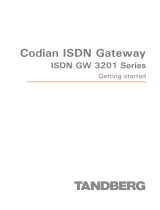
Integrators’ Reference Manual for ViewStation EX, ViewStation FX, and VS4000
ii www.polycom.com
Capacity Planning ..................................................................................................... 53
Call Processing Considerations............................................................................... 54
Gatekeeper Identifier......................................................................................... 55
Default Gatekeeper ............................................................................................ 55
Call Routing Mode............................................................................................. 55
Developing the Dial Plan................................................................................................. 55
Services ................................................................................................................ 57
Administration, Policies, and Routing............................................................ 58
Network Topology............................................................................................. 59
Neighbor gatekeepers........................................................................................ 59
Addressing ................................................................................................................. 60
Zones and Zone Prefixes................................................................................... 60
Entity Addressing .............................................................................................. 61
Rules for Assigning Prefixes and Numeric Aliases ...................................... 62
Service Plans ....................................................................................................... 62
System Services .................................................................................................. 63
ISDN Requirements.......................................................................................................... 63
ISDN PRI..................................................................................................................... 63
Determining Usage ............................................................................................ 65
PBX Network Configuration ............................................................................ 65
ISDN BRI..................................................................................................................... 65
DCP (Digital Communication Port) On Lucent Definity ECS............................ 68
Network Configuration..................................................................................... 68
Installation........................................................................................................... 68
Configuration...................................................................................................... 69
Site Considerations........................................................................................................... 72
Predeployment Worksheet.............................................................................................. 74
Chapter 4 - Installing Videoconferencing Systems.................. 77
The Deployment Process................................................................................................. 78
Installation Procedures .................................................................................................... 79
Installing Network Interface Modules ................................................................... 79
Quad BRI Network Interface Module.................................................................... 79
NT-1 Device ........................................................................................................ 80
Cables Used with the Quad BRI Network Interface Module ...................... 80
Installation........................................................................................................... 80
Installing a PRI Network Interface Module .......................................................... 81
External Power Supply...................................................................................... 81
Channel Service Unit ......................................................................................... 82
ADTRAN Atlas 800 Plus E1 Module............................................................... 82
If You Are Connecting to a PBX....................................................................... 83
Cables Used with the PRI Network Interface Module ................................. 83




















